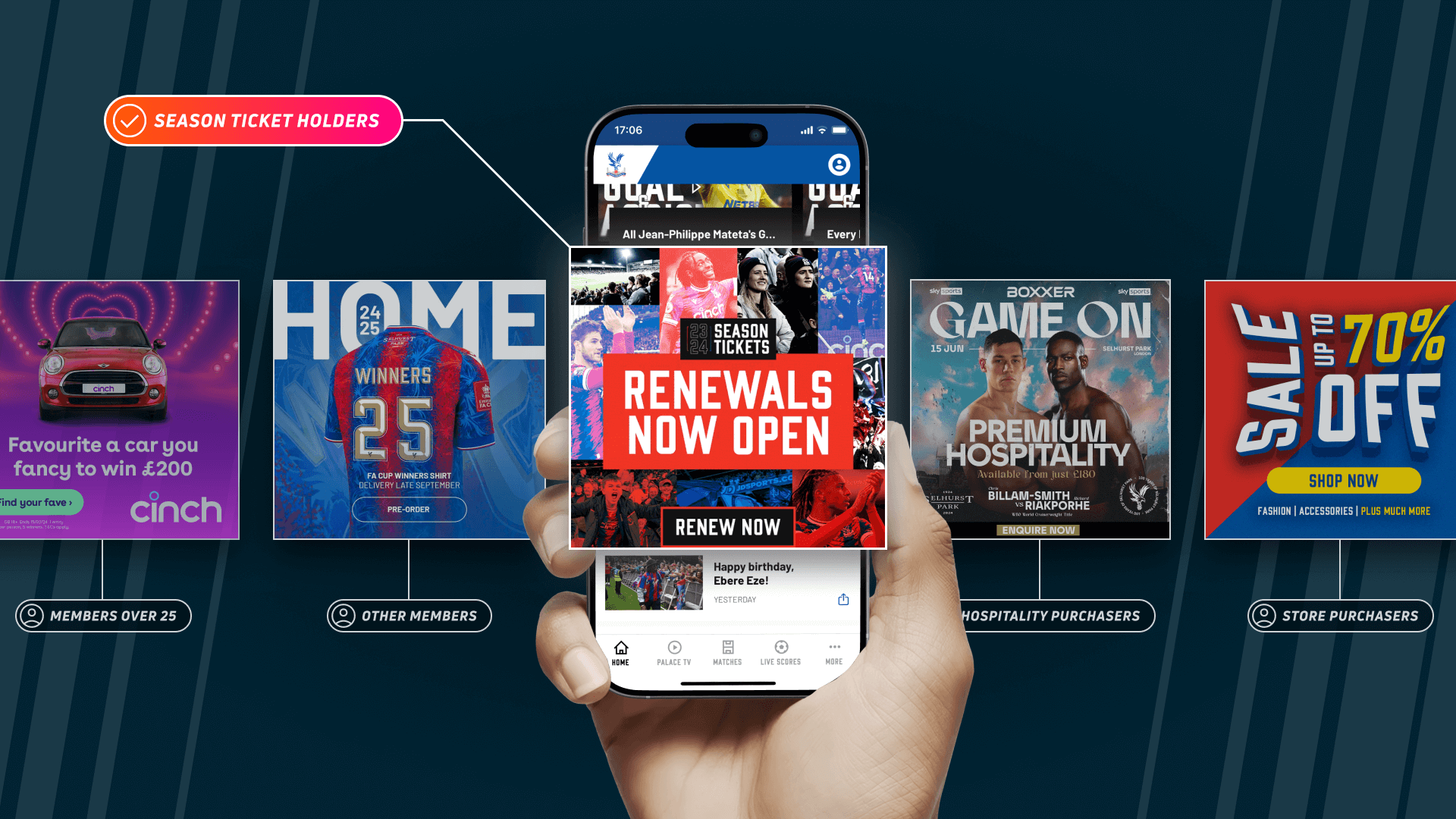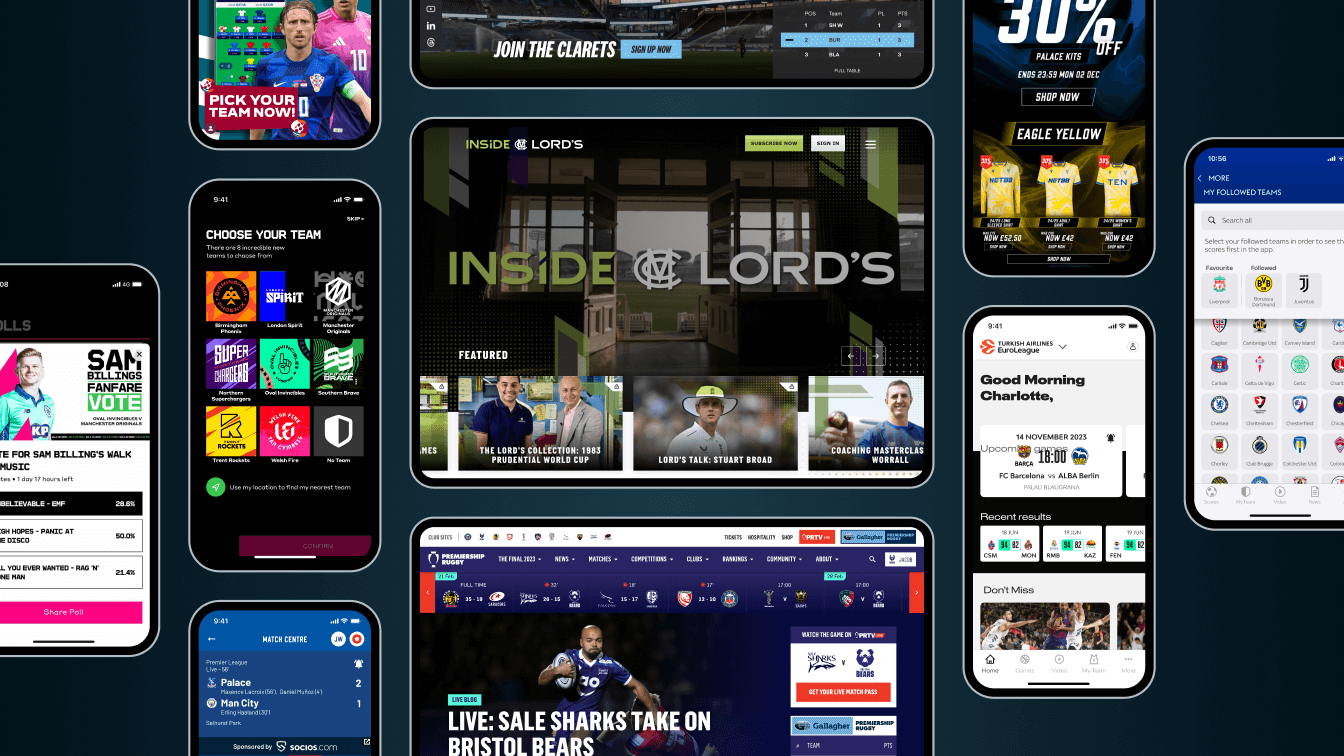
Quick Summary
This article covers the role of data in sports marketing, highlighting how a strong data strategy enables deeper fan understanding, personalised content, smarter decisions, and sustained growth in engagement and revenue.
Why Are Many Sports Marketing Strategies Ineffective?
Many sports marketing strategies fall short because they rely heavily on assumptions. This often leads to poorly targeted content, limited visibility on performance, and missed opportunities to show value to sponsors.
Data is the key to solving these challenges. It enables a deeper understanding of audience behaviours, leads to personalised communication, and increases ROI.
In this InCrowd article, we’ll explain the role of data in modern sports marketing and how a strong data strategy can transform the way you connect with fans.
But first…
Why listen to us?
At InCrowd, we help sports organisations build clear data strategies and implement the right technology to personalise fan experiences, grow their marketable database, and drive revenue. With proven success across major rights holders like Crystal Palace FC, Premiership Rugby, and UEFA, we have clear insight into what drives successful data-driven sports marketing.
What is the role of data in sports marketing?
Data plays a central role in shaping effective sports marketing strategies. It helps marketers:
- Understand fans beyond basic demographics by analysing behavioural patterns.
- Deliver targeted messaging that drives stronger campaign performance across all channels.
- Improve decision-making with insights that reveal what resonates and what doesn’t.
Data also supports long-term planning. By tracking trends and campaign results over time, you can:
- Make informed decisions on where to invest resources.
- Prioritise the right platforms for maximum fan engagement.
- Adapt strategies as fan expectations evolve.
How to use data effectively in sports marketing
1. Build the right infrastructure
To use data effectively, you must start with a strong digital foundation. This means selecting the right tools to collect, store, and manage data from sources like ticketing, retail, social media, email, mobile apps, and in-stadium activity.
At InCrowd, we do this by setting up data capture systems across major touchpoints. For SA20 Cricket, this meant implementing Cortex Promo Blocks across their website to power fan polls and competitions and capture fan data.
Effective data use starts with your technology stack:
- CRM: The central hub for fan profiles and interactions
- Website and App: Capture behavioural data and enable engagement
- Email Platform: Deliver personalised communications
- Ticketing & Transactions: Link purchase data to individual fan profiles
It’s also important to invest in secure, scalable digital platforms that prevent data fragmentation and comply with UK GDPR. With the right infrastructure in place, personalisation, segmentation, and long-term growth are possible.
2. Design smart, automated campaigns
Once the right infrastructure is in place, the next step is to use that data to power intelligent, automated marketing. This helps you deliver timely, relevant messages based on real fan behaviour.
With high-quality data, you can design campaigns that:
- Segment audiences by behaviour, preference, or lifecycle stage
- Trigger automated messages at key moments, such as welcome emails, birthday offers, or abandoned cart reminders
- Use dynamic creatives tailored to each fan’s interests
- Balance frequency and timing to avoid fatigue and message overload
Automation allows you to scale one-on-one communication without increasing manual effort. Whether it’s a welcome email after first app download, a targeted offer following a match attendance, or a reminder for a lapsed purchaser, automated workflows ensure the right message reaches the right fan at the right time.
3. Use data to personalise the fan experience
A personalised approach ensures that fans receive the right content, at the right time, through the right channel. This makes their experience smoother and more enjoyable.
We worked with Crystal Palace FC to bring this to life by launching exclusive video content within their app, supported by an integrated data warehouse to track fan behaviour. These insights were then used to deliver personalised marketing based on each fan’s interests and actions.
Here’s how data can power personalisation:
- Recommend content based on viewing habits: Show fans highlights, interviews, or features similar to what they’ve previously watched
- Promote merchandise tied to fan interests: Use purchase history or favourite teams to guide product suggestions
- Send location-specific updates: Notify fans about local events, ticket availability, or regional offers
- Mark personal milestones: Use fan data to automate messages for birthdays, anniversaries, or renewals
- Adjust message frequency: Increase or reduce how often fans are contacted, based on how often they engage
Personalisation works best when it’s consistent and based on accurate data. The more relevant your communication, the more likely fans are to stay engaged and respond positively over time.
4. Measure, learn, and optimise
Rather than relying on assumptions, data allows sports marketers to understand what’s working, what’s not, and why. The key is to define meaningful KPIs and track them consistently.
Focus on metrics that reflect both engagement and business impact, such as:
- Open and click-through rates: Assess the effectiveness of email and push campaigns
- Conversion rates: Measure how well campaigns drive actions like ticket purchases or merchandise sales
- Fan lifetime value (LTV): Understand long-term ROI and retention performance
- Channel performance: Identify which platforms deliver the best results for different audiences
- Content engagement: Track views, shares, and dwell time to refine creative strategy
Once the data is in, use it. Build regular reporting into your workflow, share insights across teams, and run different tests to validate changes.
5. Continuously refine your strategy
To get the best results, regularly analyse performance, test new ideas, and adjust your campaigns based on what the data shows. Small adjustments made consistently can lead to significant long-term gains.
Key ways to keep refining your strategy include:
- Run A/B tests: Try different subject lines, images, or calls to action to see what drives better results
- Track fan trends over time: Identify shifts in behaviour, content preferences, or purchase patterns
- Compare channel performance: Understand which platforms perform best for different audience segments
- Update segmentation rules: Adjust how you group fans based on new insights or changes in behaviour
- Review and revise goals: Make sure your KPIs still align with business priorities and campaign focus
Continuous refinement ensures that your strategies are driven by what actually works, not what used to.
Turn sports data into actionable growth with InCrowd
A structured, data-driven approach enables you to understand your audience better and create personalised experiences that drive measurable results. However, the key is not just collecting data; it’s knowing how to use it.
At InCrowd, we help leading sports organisations build the infrastructure and strategies they need to capture and use data effectively. From content delivery to CRM and fan platforms, we’ve supported Crystal Palace FC, SA20, and others to build connected, data-driven ecosystems.
Ready to capture and leverage sports data for real results? Get in touch with us today.



